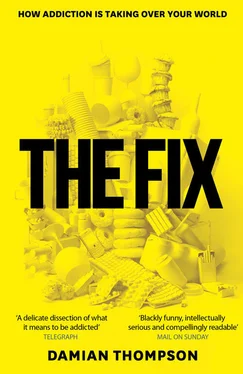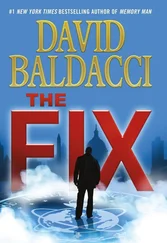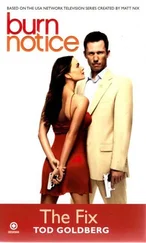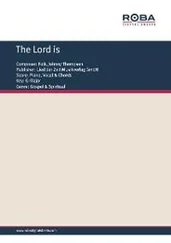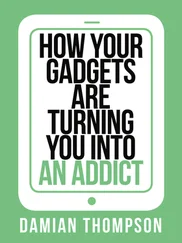1 ...8 9 10 12 13 14 ...19 After university they drifted from one undemanding job to another, in the process spending more and more time in the company of ex-public school wasters who used hard drugs. Neither Robin nor James was especially rich, but both had just enough private money to feed their dealers. Eventually they replaced their office jobs with ‘freelance’ occupations that didn’t require raising their heads from the pillow until the first of the afternoon soap operas. Both sets of parents were in despair, and raided their savings to pay for expensive spells in rehab that achieved nothing.
By 2000 the two men were boringly obsessed with getting high on any psychotropic substance they could lay their hands on, ranging from heroin to painkillers. At around that time I had a wisdom tooth taken out in the dentist’s chair and was given a supply of dihydrocodeine tablets that I didn’t take because they made me nauseous. I mentioned this to James, and within half an hour Robin was on the phone. ‘I hear you’ve got some DF118s,’ he said. I checked the label. Yes, that was what it said. ‘Since they make you puke, why not let me take them off your hands?’ he asked.
Robin and James were, or seemed to be, the most irredeemable addicts I’ve ever met. I was relieved when they drifted out of my life. I once caught sight of James hovering around the wines and spirits section of a supermarket in Bristol: this was the heyday of dirt-cheap own-brand vodka, and judging by the contents of his trolley he was taking full advantage of the special offers.
And now, five years later? Robin has a steady girlfriend, a baby daughter and a job in social media that has enabled him to start paying off his mortgage. He and his family are about to move to San Francisco, where he will work for an internet start-up. He gave up drink and drugs slowly, cutting out one substance after another, without relying on the 12 steps for guidance. ‘They just remind me of the bad old days in rehab,’ he explains. ‘My home-made recovery was a long and messy business, with plenty of false starts, but it did work in the end.’
James is dead. He killed himself by jumping from the fifth floor of an apartment block in Johannesburg in 2006. It seems to have been a spur-of-the-moment thing, but who knows? He didn’t leave a suicide note.
How can we explain the difference in the fates of the two friends? The 12-step explanation would be that Robin was never a real alcoholic or addict, since he cured himself without following the principles of the programme. He did attend AA and NA meetings, both in and out of clinics, but found them useless. ‘AA members kept regaling me with these over-polished anecdotes about their miraculous recoveries, while the NA meetings seemed to be full of people who’d been clean for a couple of days and were obviously hoping to score.’
James, in contrast, met the sort of grisly fate that, according to the Big Book, awaits most untreated addicts. In the eyes of the fellowship, his leap from the balcony proved that he was the genuine article. One of the least attractive characteristics of 12-step ‘old-timers’ is the relish with which they describe disasters that befall those who stray from the true path.
But suppose that Robin and James had died at the same time, at the height of their drinking and drug-taking. (Robin did nearly kill himself with an accidental overdose, so it’s not an unlikely scenario.) Would a post-mortem on their brains have been able to establish which of them had the ‘progressive disease’ of addiction and which was just going through a phase? The answer is no.
Moreover, if Robin and James had been subjected to a battery of tests when they were still alive, it’s extremely unlikely that any of those tests would have distinguished between the ‘real’ alcoholic, doomed without 12-step treatment, from the ‘fake’ or temporary one, capable of curing himself. My guess is that the doctors would have said, correctly: both these young men are addicted to alcohol and drugs. But if the doctors were 12-step believers, as so many are, they might have added that neither of them could cure himself. Robin would have proved them wrong.
If you doubt that addiction medicine is heavily flavoured by 12-step dogma, let me point you in the direction of one of the most recent, supposedly authoritative, definitions of addiction by doctors specialising in the subject. It was published in 2011 by the American Society of Addiction Medicine (ASAM), which represents physicians who work with chemically dependent patients.
‘Addiction is a primary, chronic disease of brain reward, motivation, memory and related circuitry,’ it declares. ‘Dysfunction in these circuits leads to characteristic biological, psychological, social and spiritual manifestations. This is reflected in an individual pathologically pursuing reward and/or relief by substance use and other behaviours.
‘Addiction is characterised by inability to consistently abstain, impairment in behavioural control, craving, diminished recognition of significant problems with one’s behaviours and interpersonal relationships, and a dysfunctional emotional response.
‘Like other chronic diseases, addiction often involves cycles of relapse and remission. Without treatment or engagement in recovery activities, addiction is progressive and can result in disability or premature death.’ 3 Конец ознакомительного фрагмента. Текст предоставлен ООО «ЛитРес». Прочитайте эту книгу целиком, купив полную легальную версию на ЛитРес. Безопасно оплатить книгу можно банковской картой Visa, MasterCard, Maestro, со счета мобильного телефона, с платежного терминала, в салоне МТС или Связной, через PayPal, WebMoney, Яндекс.Деньги, QIWI Кошелек, бонусными картами или другим удобным Вам способом.
This is what a definition looks like when it has been drafted by a committee. The 80 doctors who worked on it seem to have thrown everything at it but the kitchen sink. But what their definition cannot conceal – indeed, what it inadvertently reveals – is that addiction is far too complex a phenomenon for doctors to classify as a disease in the sense that cancer and tuberculosis are diseases. Hence the waffle.
Addiction specialists wouldn’t tie themselves in such knots if they had a diagnostic test for the ‘disease’ of addiction. But there is no such test.
Not only is addiction unlike cancer and diabetes, which show up in lab results. It’s also unlike brain diseases such as Alzheimer’s. That, too, lacks a simple diagnostic test: in its early stages its symptoms can be mistaken for stress or other forms of dementia. But eventually the involuntary behaviour of the patient should allow the doctor to make an accurate diagnosis, after which its progress is truly inevitable. There is no 12-step programme for Alzheimer’s to keep its symptoms under control. The end point is death, after which an autopsy will probably reveal shrinking of the brain that provides final confirmation of the diagnosis.
I’m not saying that medicine can’t identify addiction in the ordinary sense of the word: of course it can. Scientists can test for chemical dependence on a drug. They can measure a patient’s tolerance for it and predict the withdrawal symptoms. They can identify the precise damage caused by substance abuse and hazard a guess as to life expectancy. They can look at a patient and say: this person is an addict.
But what they can’t tell, even with brain-scanning technology, is whether a neurochemical ‘switch’ has been thrown which induces irreversible addiction, which is what disease-model advocates are now suggesting. We don’t even know whether such a switch exists. It’s a fashionable theory, but that’s all it is.
Читать дальше
